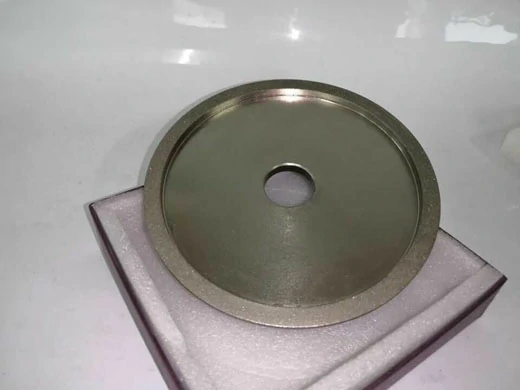Tool and cutter grinding is a critical process in the manufacturing industry that requires precision and attention to detail. However, there are several problems that can arise during this process, posing challenges for manufacturers. In this article, we will explore six key problems that cannot be ignored in tool and cutter grinding.
1. Tool Wear and Breakage
One of the major issues in tool and cutter grinding is tool wear and breakage. As tools are repeatedly used for grinding, they are subjected to high levels of stress, which can lead to wear and eventual breakage. This not only affects the quality of the finished products but also increases the downtime for tool replacement and maintenance.
To address this problem, manufacturers need to invest in high-quality materials and coatings for their tools, as well as implement regular inspection and maintenance schedules to identify signs of wear or damage early on. Additionally, optimizing the grinding parameters such as speed, feed, and depth of cut can help minimize tool wear and extend tool life.
2. Dimensional Accuracy and Surface Finish
Achieving precise dimensional accuracy and surface finish is another challenge in tool and cutter grinding. Even minor deviations in the grinding process can result in components that do not meet the required specifications, leading to rework and increased production costs.
To overcome this challenge, it is essential to use advanced grinding machines equipped with precise control systems and monitoring capabilities. Additionally, selecting the right grinding wheels with appropriate abrasives and grit sizes, as well as maintaining consistent coolant supply and temperature control, can significantly improve dimensional accuracy and surface finish.
3. Thermal Damage and Distortion
Thermal damage and distortion are common problems encountered during tool and cutter grinding, especially when working with hard materials or high-speed grinding operations. Excessive heat generated during the grinding process can lead to changes in the material structure, resulting in reduced tool life and compromised part integrity.
To mitigate thermal damage and distortion, it is crucial to optimize the cooling and lubrication methods, as well as implement effective strategies to manage heat generation. This may involve the use of advanced cooling technologies, such as cryogenic cooling or minimum quantity lubrication (MQL), to maintain stable temperatures during grinding and prevent thermal-induced issues.
4. Grinding Wheel Wear
Grinding wheel wear is a persistent issue that can significantly impact the overall efficiency and quality of tool and cutter grinding. As the grinding wheel is used, it gradually wears down, leading to changes in its cutting characteristics and surface finish, thus affecting the workpiece.
To address this problem, it is important to monitor and control the dressing and truing processes to maintain the desired profile and sharpness of the grinding wheel. Additionally, investing in high-performance abrasive materials and bonding systems can help reduce wheel wear and extend its lifespan, ultimately improving grinding efficiency and consistency.
5. Machine Vibration and Chatter
Machine vibration and chatter can have detrimental effects on the grinding process, leading to poor surface finish, dimensional inaccuracies, and accelerated tool wear. These issues can be caused by various factors, including machine dynamics, grinding wheel imbalances, and instability in workpiece holding.
To tackle machine vibration and chatter, manufacturers should conduct thorough machine maintenance and dynamic balancing of grinding wheels to minimize imbalance. Furthermore, optimizing the machine setup, including workpiece clamping and tool holding fixtures, can help reduce vibrations and enhance stability during the grinding operation.
6. Operator Skill and Training
The skill and expertise of the operators involved in tool and cutter grinding play a crucial role in addressing the aforementioned problems. Lack of proper training and experience can lead to inconsistent grinding results, increased scrap rates, and safety hazards in the workplace.
Investing in comprehensive training programs for operators, covering aspects such as grinding techniques, machine operation, tool inspection, and troubleshooting, can greatly improve overall process reliability and product quality. Moreover, providing operators with access to advanced tool and cutter grinding technologies and diagnostic tools can empower them to identify and resolve issues effectively.
In conclusion, the challenges associated with tool and cutter grinding are multifaceted and demand careful attention from manufacturers. By implementing proactive measures to address tool wear, dimensional accuracy, thermal damage, grinding wheel wear, machine vibration, and operator skill, manufacturers can enhance the efficiency, quality, and consistency of their grinding operations, ultimately driving greater value across the entire manufacturing process.
.webp)
